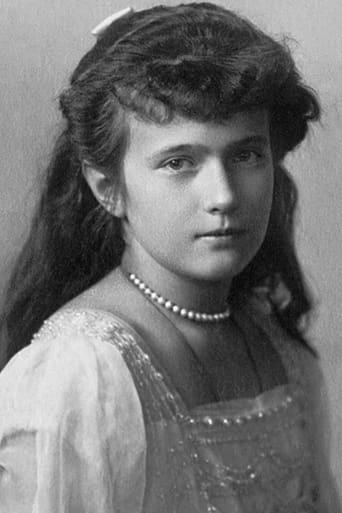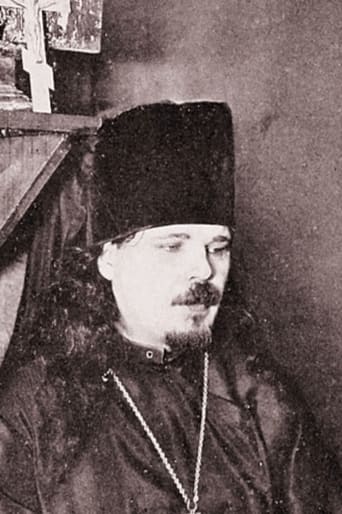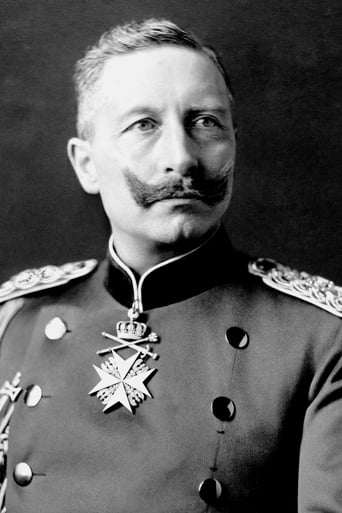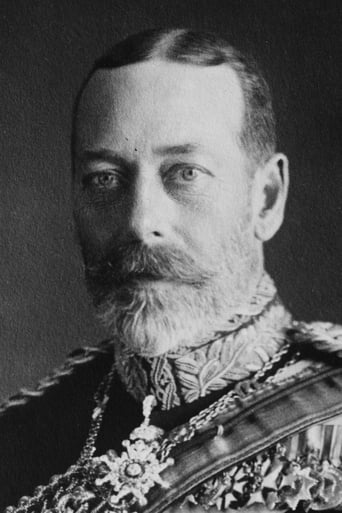Jeanskynebu
the audience applauded
Console
best movie i've ever seen.
SanEat
A film with more than the usual spoiler issues. Talking about it in any detail feels akin to handing you a gift-wrapped present and saying, "I hope you like it -- It's a thriller about a diabolical secret experiment."
InformationRap
This is one of the few movies I've ever seen where the whole audience broke into spontaneous, loud applause a third of the way in.
zachary-03373
After an initial viewing, Esfir Shub's Fall of the Romanov Dynasty appeared fairly unremarkable in its presentation. Concerning structure, the film chronologically moves towards the fate that is predestined in its title with title cards giving context to the scenes. Without a score to accompany it (the version I watched), it is a fairly dry viewing experience after watching Vertov's 'documentary' Man With a Movie Camera. However, the comparison here isn't very appropriate considering that the aims of the filmmakers were not closely aligned at all. Shub's film compiles archival footage with the intention of forming a coherent historical record. Her objectivity is certainly debatable. The aloofness of the nobility is inter-cut with the toil of laborers in the fields. The full regalia of Russia's leading military men and the white, virginal dresses of noble women are put against the humble shawls of impoverished city dwellers. The individual leaders of the monarchists are featured prominently while crowds of dissidents replace the screen time of the Bolshevik leaders, an attempt by Shub to play on the revolution as populist movement. While the misleading nature of the film is a little off putting (for example capitalists are explicitly blamed for World War I), Shub's patience in the editing room and her ability to showcase tension between estranged classes of people visually redeem the film as a whole.
Nate J
Fall of the Romanov Dynasty seems to not know what it wants to be as a film. Presenting a chronological set of not uninteresting documentary footage, Dynasty fails to present historical information in anything but the most barest of terms. On the other hand, the film completely lacks in dramatization or characterization, and so apparently styles itself as a historical narrative. The entire structure of the film is characterized by strange choices. The opening sequences, comparing the lives of the aristocracy and the lower classes in Tsarist Russia, are a fine exposition, but consume a whopping third of the total screen-time without much variation. Dynasty suggests that WWI was some sort of money-making venture among the ruling classes and industrialists of Europe, which leads one to believe one is watching a work of socialist propaganda. However, when the revolution is finally reached, it is depicted almost entirely as a reactionary movement to the horrors of the war and the inabilities of the monarchy rather than an ideological battle. The images of mobilization and war are the most exciting ones, and in that sense, fail to fulfill the apparent goal of denouncing imperial injustices. Perhaps the strangest element is the choice to relegate the Bolshevik revolution to the final three minutes of the film: we see Lenin denouncing the provisional government, and then a cut to credits. It may be the case that film-goers had tired of the revolutionary story by 1927, but this eliminates what is probably the most compelling part of Russia's role in WWI. The film's strengths lie in the candid footage; we see the big names – Nicholas II, Kerensky, Lenin – in living movement, and perhaps the only view that many Russians would have gotten of them. Images of imperial and religious ceremonies are well juxtaposed with shots of toiling peasants and marching protesters in a sort of a slide show of pre- and post-revolutionary norms. On the whole, though, Fall of the Romanov Dynasty is rather directionless, and fails to either present a compelling revolutionary ideology or a historical reflection of any depth.
JoeytheBrit
This insight into the events leading up to the 1917 revolution wasn't anywhere near as interesting as I thought it was going to be, largely perhaps because it was presumably made under the watchful eye of the Communist dictatorship meaning that what ended up on screen was always going to be one sided. Although it begins by showing the various elements of the Russian political, religious and societal landscape, the film does tend to focus more on the little man and the peasants and the impact the Great War had on the possibility for a revolution to take place. The old order are largely portrayed as malevolently grinning buffoons while the likes of Lenin are barely glimpsed at all. And while we see many shots of large crowds gathered in the streets of St. Petersburg, we see no riots or bloodshed and, essentially, fail to really get a flavour of the times and of how much excitement must have been buzzing around the city streets in those heady days. Those poor mugs must really have believed the days of utopian bliss had arrived
FreeMM
Fascinating collection of footage from the years 1913-17 focusing on the Russian Revolution. With an introduction by a Russian historian and cultural expert, it exposed a number of myths about the revolution and in particular, the Bolsheviks.With this gentleman providing a commentary over the footage that's happening and explaining the propaganda behind not only this film, but the three films that I'd seen by Eisentein, presenting them in a completely different light. Filmwise it wasn't anything special, however the informed commentary was riveting and helps you to understand a bit more about what actually happened, even if it only touches the surface.Watched in conjunction with Eisenstein's October 1917, Strike and Battleship Potemkin, these are essential viewing.



